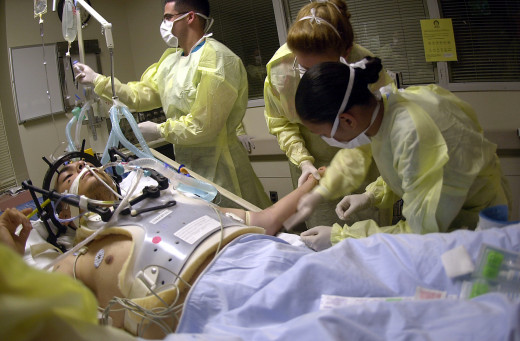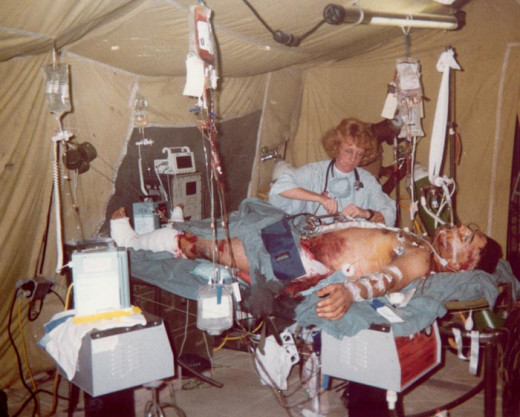Septic Shock (Endotoxic Shock): Health Implications Of Its Management And Prognosis
The Medical Assessment Of An Endotoxic Shock Victim

Management Of Endotoxic Shock
Management
General measures are intended to counteract the effects of shock.
Antibiotics: Early institution of antimicrobial therapy is lifesaving. Specimens are collected for bacteriological investigations before antibiotics are given. Bactericidal drugs should be given intravenously. Combination or gentamicin and metronidazole is a satisfactory regimen which can give a broad coverage against aerobic and anaerobic organisms. In neutropenic subjects, pseudomonas infection is probable and gentamicin and carbenicillin are preferable in them. Gram positive bacterial infections respond better to a combination of gentamicin and cephalosporins. When the organisms are known, the most effective drug should be employed.
Vasoactive Drugs: Two groups of drugs which are of value in septic shock are alpha- receptor blocking agents like phenoxybenzamine and phentolamine and beta receptor stimulants like isoprenaline and dopamine. Before using vasoactive agents, fluid and electrolyte deficiency should be corrected so as to maintain the central venous pressure above 10 cm of water. Isoprenaline is given in a dose of 2 to 8 ug/day venular constriction in the microcirculation by its direct vasodilating effect. It has a direct inotropic effect on the heart. The cardiac output is increased due to reduction in peripheral resistance while cardiac work is diminished. Ventricular arrhythmia may occur if fluid volume is not corrected before administering isoprenaline. This risk is more if the myocardium is ischemic.
Dopamine which stimulates beta 1 adrenaoreceptors increases both cardiac output and arterial pressure. Given in an intravenous dose of 2 to 5 ug/Kg/min, it is effective in raising the blood pressure.
Digitalis and diuretics: A rapid acting digitalis preparation such as cedilanid is given when CVP is high in the face of hypotension. Oliguria persisting after correction of circulation warrants the intravenous use of diuretics like furosemide 20 to 40 mg.
Removal of foci of infection: Since in many patients septic shock is caused by focal infection such as absecess, necrotic bowel, necrotic gall bladder, infected uteru or pyonephrosis, surgical intervention to remove such infection is indicated even if the patient is desperately ill. Operation should not be postponed on account of poor general conditions because the general condition will continue to deteriorate till the septic focus is removed.
Steroids: Routine use of corticosteroid is controversial. Large doses of steroids are beneficial to raise the blood pressure and reduce toxemia temporarily. Dexamethason, 3 mg/Kg or methylprednisolone, 30 mg/Kg, or hydrocortisone, 30 mg/Kg given intravenously and repeated after 6 hours and 12 hours may be life saving. The fact that corticosteroids increase the change for infection and depress defence mechanisms of the host contraindicate their routine use.
Antisera aimed at counteracting the effects of endotoxins are being developed.
What Is The Survival Rate Of Endotoxic Shock Victims?

Prognosis Of Endotoxic Shock
Prognosis
In general, the mortality is 50% or higher when shock is established. The prognosis is better if there if improvement of the sensorium; improvement in peripheral cyanosis; warming up of the skin over the extremities; urine output rises to 40 to 50 ml/hour; pulse pressure improves’ CVP returns to normal and finally blood pressure increases and remains steady.
© 2014 Funom Theophilus Makama




